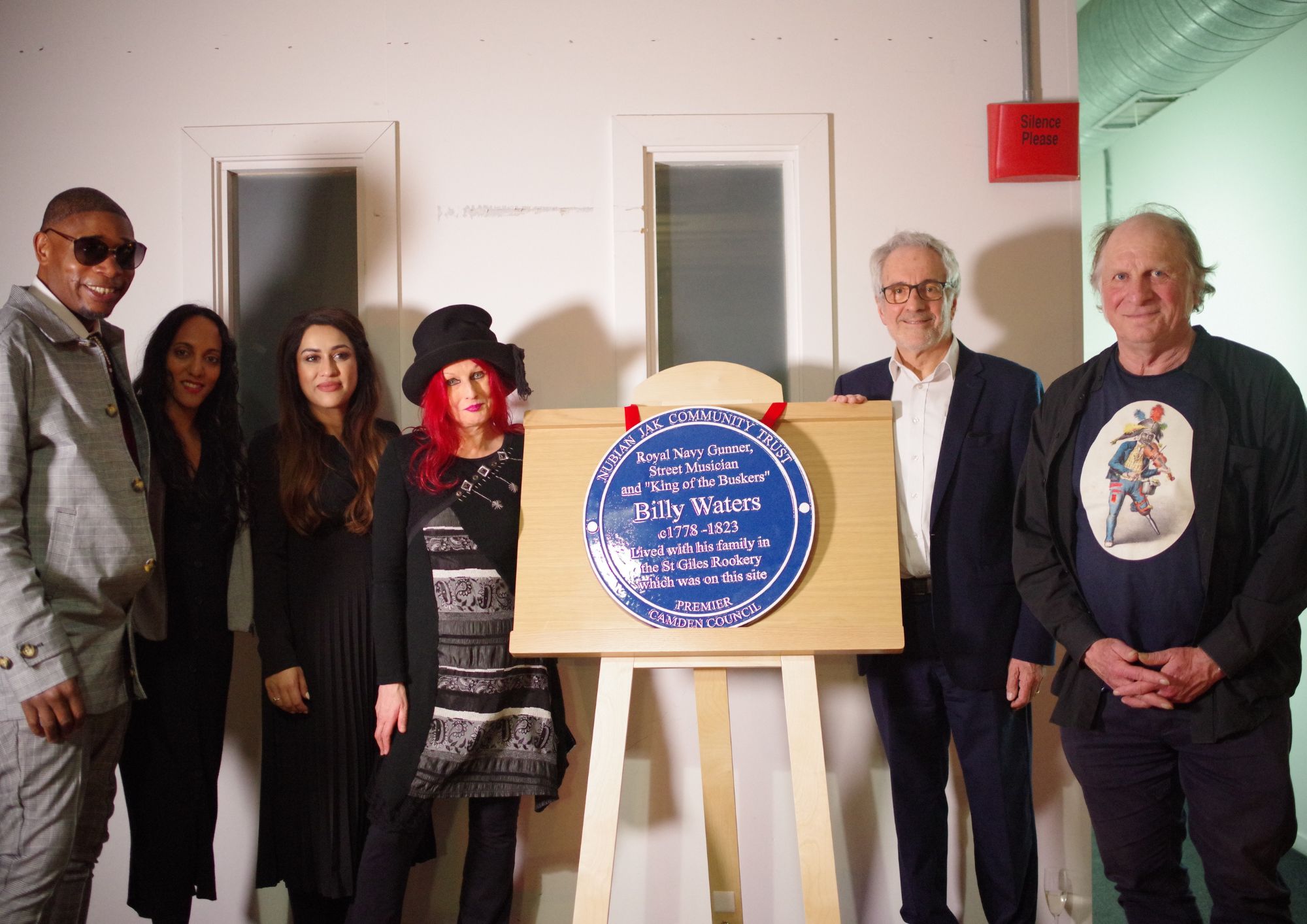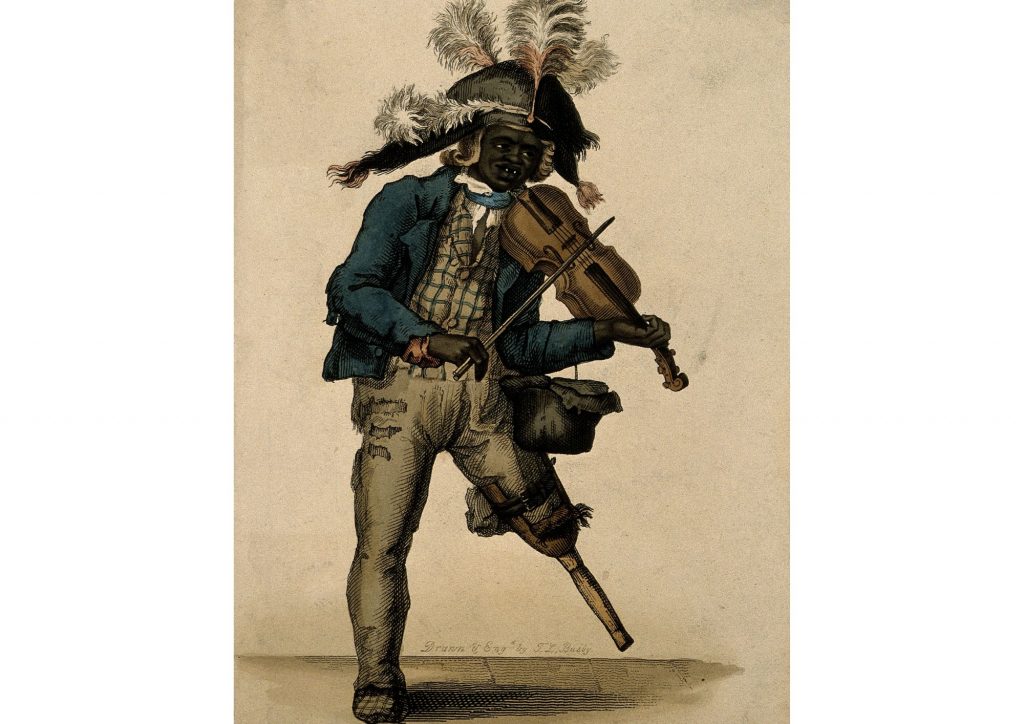Black busker Billy Waters celebrated as council diversifies city’s plaques
Camden Council says blue plaques must reflect borough's history
Friday, 24th March 2023 — By Anna Lamche

Pictured, from left: Jak Beula, Nubian Jak Community Trust; Mathurini Visakan, Camden Council; Cllr Nadia Shah; historian Jane Palm-Gold; John Reiss, executive chairman of Premier; and writer Tony Montague
SUPPORT THE CNJ: CLICK ABOVE TO ADD YOUR DONATION TO OUR BIRTHDAY APPEAL
TWO hundred years after his death, navy gunner, street musician and “King of the Buskers” Billy Waters has been honoured with a blue plaque on the site of his former home.
Unveiled at a ceremony on Tuesday night in Bucknall Street, in St Giles, the plaque celebrates the remarkable life of one of the country’s most significant 18th-century black figures.
Born into slavery in America in the late 1770s, Mr Waters arrived in London after serving as a quarter gunner in the navy, where he lost a leg after falling from the rigging of a ship.
In London, Mr Waters became “the first pop star” of his day, making his living by “what he termed as ‘an honest living by the scraping of catgut’ – i.e fiddling,” said Jane Palm-Gold, the historian who led the project.
Mr Waters was “one of the honest working poor” of St Giles’ rookery, an area of London which had a notorious reputation for high levels of poverty and crime.
Ms Palm-Gold told the audience: “He danced, sang and played his fiddle on the London streets and became so famous that by the time of his death, he’d been immortalised by numerous Regency artists, printmakers and illustrators.
“His performance attracted much attention and mirth, especially when, dancing, he would turn and kick out his wooden leg. He’s always been a hero of mine, a man who against all the odds made a great success of his life, despite his disability and the racism of nineteenth-century England.”
But misfortune struck after Mr Waters was caricatured in Pierce Egan’s Life in London, a hugely successful book that “depicted Billy at the heart of the action amongst the criminal classes of the Rookery”.
“His character was maligned and his reputation was ruined,” Ms Palm-Gold said, and he died in the St Giles’ workhouse infirmary, where he was crowned “king of the St Giles beggars”.

Billy Waters: an engraving by Thomas Lord Busby
The plaque is the outcome of a collaboration between the council and Nubian Jak Community Trust, which works to memorialise the historic contributions of Black and minority ethnic people in Britain’s public spaces through commemorative plaques and sculpture.
Cabinet councillor Nadia Shah stressed the “need to increase the diversity of blue plaques to adequately reflect Camden’s history and our diversity”, adding: “We will continue to work with the public to uncover the stories of those whose achievements have not been recognised.”
SEE ALSO COUNCIL BLOCK TO BE NAMED AFTER SPY HERO NOOR INAYAT KHAN
She added the council “will do everything we can” to see the plaque fixed to the wall outside after permission was refused by the landlords of the building. Creative agency Premier currently leases the building.
Executive chairman John Reiss said his landlord “has refused permission for the plaque to be fixed to the building externally, and I quote, ‘because it could create challenges for future planning applications.’”
Instead the plaque will be displayed from a window, “facing outwards” onto Dyott Street, Mr Reiss said.
SEE ALSO CNJ’S BIRTHDAY – SUPPORT CAMPAIGNING JOURNALISM


